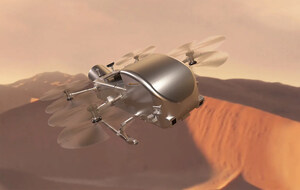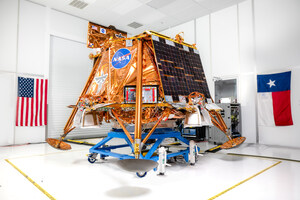WASHINGTON, Oct. 17, 2014 /PRNewswire-USNewswire/ -- Recognizing that technology drives exploration, NASA has selected four teams of agency technologists for participation in the Early Career Initiative (ECI) pilot program. The program encourages creativity and innovation among early career NASA technologists by engaging them in hands-on technology development opportunities needed for future missions.
NASA's Space Technology Mission Directorate created the ECI to enable a highly collaborative, joint-partnering work environment between the best and brightest NASA early career innovators and leading innovators in industry, academia and other government organizations.
"Continued investment in technology is a requirement for the success of NASA's current and future missions," said Michael Gazarik, associate administrator for Space Technology at NASA Headquarters in Washington. "Investing in the future leaders in space technology in partnership with the nation's leading innovators is part of our overall portfolio strategy for mission success."
Teams selected for the ECI pilot program and their topic areas are:
- High-Speed Video Imaging with Disruptive Computational Photography Enabling Technology, submitted by NASA's Stennis Space Center, Mississippi, with partner, Innovative Imaging and Research (I2F) of Mississippi. The team will develop and demonstrate a system for high-speed, 3-D, High Dynamic Range (HDR) imaging. Video imaging will be performed at the chip level using computational photography, providing NASA with advanced visualization technologies to meet future needs.
- Lightweight Integrated Solar Array and Transceiver (LISA-T), submitted by NASA's Marshall Space Flight Center in Huntsville, Alabama with partner, Huntsville's NeXolve, to build and demonstrate a deployable solar array and integrated transceiver system. The technology represents a novel approach to developing a lighter weight, higher power technology solution for future spacecraft energy needs.
- On-Orbit Autonomous Assembly of Nanosatellites, submitted by NASA's Langley Research Center, Hampton, Virginia with external partner Cornell University, Ithaca, New York. The team will develop advanced autonomous docking hardware based on Halbach magnetic array technology. Reliable autonomous rendezvous and docking techniques provide enabling technologies for future mission needs.
- Integrated Display and Environmental Awareness System (IDEAS), submitted by NASA's Kennedy Space Center, Florida, with Orlando area partners Abacus Technology and Purple Rock Scissors, and the Florida Institute of Technology of Melbourne. The team will develop a wearable computer with an optical heads-up display providing augmented reality data and communications, enhancing real-time operations on the ground and in space.
NASA's Space Technology Mission Directorate received 28 proposals from NASA early career teams for the ECI pilot program. Selected proposals will refine their plans and negotiate agreements with partner organizations. Projects will be funded up to $1 million per year for a period of up to two years.
NASA's Space Technology Mission Directorate is building, testing and flying the technologies needed for the aerospace missions of tomorrow. The directorate continues to solicit the help of the best and brightest minds in academia, industry, and government to drive innovation and enable solutions in important technology thrust areas. These planned investments are addressing high priority challenges for achieving safe and affordable deep-space exploration.
For more information about NASA's Space Technology Mission Directorate, visit:
Logo - http://photos.prnewswire.com/prnh/20081007/38461LOGO
SOURCE NASA
Related Links
WANT YOUR COMPANY'S NEWS FEATURED ON PRNEWSWIRE.COM?
Newsrooms &
Influencers
Digital Media
Outlets
Journalists
Opted In






Share this article